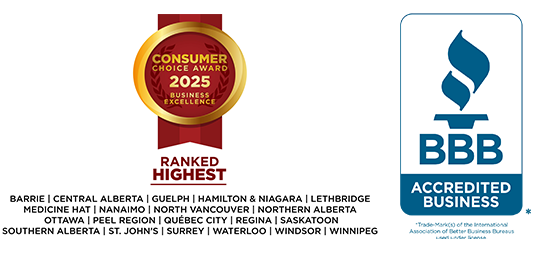Mental and financial health are closely connected. Struggling to pay your bills, navigate rising interest rates, and field calls from creditors can contribute to anxiety, depression, and sleep disturbances. Additionally, mental health challenges can make it more difficult to maintain steady employment, leading to overspending on your credit card, causing you to delay getting help with your debt.
According to the latest MNP Consumer Debt Index, half of Canadians are $200 or less away from insolvency and a third say they are already insolvent. Rising costs and economic uncertainty are having a significant impact on the mental and financial health of Canadians. Let’s discuss how debt and mental health are connected — and explore several steps you can take to support your financial and mental well-being.
How mental health impacts debt
Your mental health can have numerous impacts on your financial health, including:
- Overspending — Some mental health conditions can lead to impulsive spending. Additionally, those already struggling with financial instability may turn to overspending as a coping mechanism.
- Avoidance — People with anxiety or depression may ignore bills and avoid creditors. This leads to missed payments and can also cause people to delay seeking help with their debt.
- Employment — Mental health struggles can make it difficult to maintain steady employment, which can lead to reduced income and financial instability.
- Decision-making — Some mental health conditions can make it more challenging to budget, pay bills on time, or seek financial help.
How debt impacts mental health
Likewise, debt can cause a variety of impacts on your mental health, including:
- Anxiety — Struggling to make payments on your credit card or avoiding creditors can cause ongoing stress and anxiety.
- Depression — Feeling helpless and ashamed because of your financial difficulties can contribute to depression.
- Difficulty sleeping — Worrying about bills and creditors can cause sleep disturbances, which worsen mental health issues.
- Relationship strain — Financial challenges can contribute to conflicts in your relationships or cause you to isolate from your friends and family.
It is important to note that people who are struggling with debt may not be able to afford therapy, medication, or other mental health support. This makes it even more difficult to break the cycle between declining financial and mental health.
Four steps to improve your mental and financial health
Mental health and debt are closely linked — and the cycle can be challenging to break. These four steps can help you get started on improving your financial and mental well-being:
1. Acknowledge the financial problem
The first step toward improving your financial and mental health is to acknowledge that you are facing challenges. While it may feel overwhelming, it is important to get a copy of your credit report, credit score, and develop a comprehensive record of your debts. This will provide you with visibility into your financial situation and help put things into perspective.
2. Review the continuum model
The next step is to review the Mental Health Continuum Model to gain a better understanding of your mental health. This model uses gradients — from red to green — to help identify triggers and potential solutions for different degrees of mental health stress.
This model is a useful tool to help you recognize distress early and implement stress management or prevention strategies to improve your mental health. It focuses on specific changes in mental health and performance in six different domains: mood, attitude and performance, sleep, physical health, social well-being, and substance use/gambling/gaming issues.
Because mental health is a spectrum, you may find that you identify with green (healthy) in one area of your life, but yellow (stress) in others.
3. Create a budget
Once you have gained a comprehensive understanding of your credit score and debts, it is important to build a basic budget. This budget will help you pay off your debts and save more money — which are important factors in improving both your mental and financial health.
Your budget should include both your income and expenses, including your household expenses, bills, and debt payments. It should also include saving for major purchases such as a new vehicle. A budget is a vital tool to help you understand where your money is coming from and how you are spending it each month. This helps you make changes to prioritize your spending, increase your savings, and reduce your financial stress.
4. Ask for help
Taking the steps to get a more comprehensive view of your financial and mental health can help you make changes to pay off your debts and improve your mental wellness. However, you may need additional support — and there’s no shame in seeking professional help to address the challenges you are experiencing.
The Canadian Mental Health Association can be a great resource to access insights and tools that support your journey toward mental well-being. If you are not able to see a therapist, confiding in a trusted partner, friend, or family member can help improve your mental health.
Financial planners, credit counsellors, and Licensed Insolvency Trustees are resources that can help improve your financial health. They work with individuals struggling with financial stress every day and have the experience to help you work toward a debt-free future.
Take control of your finances
If you are struggling with debt and financial stress, contact a Licensed Insolvency Trustee (LIT). LITs are the only federally regulated debt professionals who can assist with all the debt relief options, including Consumer Proposals and Bankruptcy, stop harassment from debt collectors, and discharge people from debt.
LITs have the experience to help you review all the debt relief options available so that you can choose the solution that works best for your specific situation. Together, we’ll help you achieve a fresh financial start.



